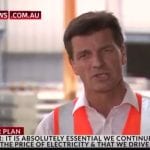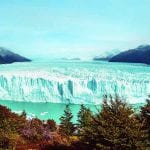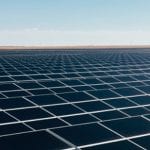Around The Web
Queensland’s electric vehicle revolution charging ahead
 Hyundai’s first fully electric vehicle had its first test run on Australian roads today – with Queensland, the nation leader in EV policy, chosen to host the Australian launch.
Hyundai’s first fully electric vehicle had its first test run on Australian roads today – with Queensland, the nation leader in EV policy, chosen to host the Australian launch.
The post Queensland’s electric vehicle revolution charging ahead appeared first on RenewEconomy.
Coalition digs in for another carbon tax scare campaign as May poll looms
 Taylor promises a reprise of what the hard right does best - a carbon tax scare campaign - as Coalition loses another MP and Morrison flags early budget and a May poll.
Taylor promises a reprise of what the hard right does best - a carbon tax scare campaign - as Coalition loses another MP and Morrison flags early budget and a May poll.
The post Coalition digs in for another carbon tax scare campaign as May poll looms appeared first on RenewEconomy.
Local Schools and RACV supporting AusNet Services to launch Innovative Power-saving Scheme this Summer
 AusNet Services is looking to partner with local community members this summer to prevent power outages, and to help schools and community members make money at the same time.
AusNet Services is looking to partner with local community members this summer to prevent power outages, and to help schools and community members make money at the same time.
The post Local Schools and RACV supporting AusNet Services to launch Innovative Power-saving Scheme this Summer appeared first on RenewEconomy.
Al Gore to conduct climate leadership training in Brisbane
 Former US Vice President Al Gore will visit Brisbane next year to conduct climate change leadership training for up to a 1000 people from across Australia and the Pacific.
Former US Vice President Al Gore will visit Brisbane next year to conduct climate change leadership training for up to a 1000 people from across Australia and the Pacific.
The post Al Gore to conduct climate leadership training in Brisbane appeared first on RenewEconomy.
Draft G20 statement waters down Paris climate commitment
 Argentinian official says ambiguity over the Paris Agreement is needed to avoid a split with the US, days before critical UN climate talks begin.
Argentinian official says ambiguity over the Paris Agreement is needed to avoid a split with the US, days before critical UN climate talks begin.
The post Draft G20 statement waters down Paris climate commitment appeared first on RenewEconomy.
Epuron secures new loan facility for Northern Territory solar assets
 One of the CEFC's first large-scale solar loan customers, Epuron, has secured a new finance facility with specialist fund Infradebt, for its portfolio of NT solar assets.
One of the CEFC's first large-scale solar loan customers, Epuron, has secured a new finance facility with specialist fund Infradebt, for its portfolio of NT solar assets.
The post Epuron secures new loan facility for Northern Territory solar assets appeared first on RenewEconomy.
Solar woes intensify as RCR collapse blamed on connection delays
 RCR Tomlinson collapses hits W.A. solar project as it emerges cash flow problems caused by connection delays that caused milestone payments on major solar contracts to be missed.
RCR Tomlinson collapses hits W.A. solar project as it emerges cash flow problems caused by connection delays that caused milestone payments on major solar contracts to be missed.
The post Solar woes intensify as RCR collapse blamed on connection delays appeared first on RenewEconomy.
Great Pacific garbage patch swimmer forced to stop after nearly 3,000km
Storm-damaged support ship means Ben Lecomte, 50, has to divert to Hawaii
A French-American plastic pollution campaigner has given up his attempt to swim across the Pacific ocean after a storm broke the mainsail of his support ship, organisers have said.
Ben Lecomte had completed about 2,780km (1,500 nautical miles) of the 9,260km (5,000-nautical mile) journey. The trip was to take him through 1,600km of the “Great Pacific garbage patch”, in an attempt to raise awareness of plastic pollution.
Continue reading...Nasa Mission: InSight successfully lands on Mars
Siemens to deliver Australia’s first solar farm synchronous condenser
 Siemens, in partnership with VINCI-Energies/Electrix will design, develop and deliver Australia’s first large synchronous condenser to be installed at a solar farm.
Siemens, in partnership with VINCI-Energies/Electrix will design, develop and deliver Australia’s first large synchronous condenser to be installed at a solar farm.
The post Siemens to deliver Australia’s first solar farm synchronous condenser appeared first on RenewEconomy.
Entura named owner’s engineer for Dundonnell wind farm
 Specialist power and water consulting firm Entura has been named by Tilt Renewables as the Owner’s Engineer for the Dundonnell Wind Farm in Victoria, Australia.
Specialist power and water consulting firm Entura has been named by Tilt Renewables as the Owner’s Engineer for the Dundonnell Wind Farm in Victoria, Australia.
The post Entura named owner’s engineer for Dundonnell wind farm appeared first on RenewEconomy.
Developing world takes over on renewables investment but coal powers on -survey
CP Daily: Monday November 26, 2018
ICE loses US carbon trading director to rival IncubEx
‘Yeah, I don't believe it’: Trump on his administration’s own climate report – video
Donald Trump rejected the central conclusion of a government climate report finding by his own administration
Continue reading...So far, wildfires spare California offset projects
Climate report Trump tried to bury: key findings No 1 – air pollution kills
The Trump administration published a major report on climate change the day after Thanksgiving. We will explore the major findings each day this week
Donald Trump doesn’t believe his own government’s major report on climate change – which the administration tried to bury over the Thanksgiving break. It warns that rising temperatures are already harming America and will cause huge damage globally. The Guardian will explore key findings from the report each day this week.
Continue reading...


